Abstract
The nature of the inorganic carbon utilized during photosynthesis by Chlorella pyrenoidosa was investigated using three experimental techniques (open gas analysis system with “artificial leaf” or “aqueous” chambers and O2 electrode system) to measure carbon assimilation. Photosynthesis was studied as a function of pH and CO2 concentration. The CO2 concentration was inadequate to meet the requirements of photosynthesis only when HCO3− was added at high pH. Under all other conditions, the low and constant Km (CO2), in contrast to the highly variable Km (HCO3−), suggested that CO2 was the major species utilized.
Higher rates of photosynthesis were observed under limiting CO2 conditions above pH 7.5 but rates of hydration of CO2 were not consistent with the view that the stimulation in photosynthesis was supported by HCO3−. In the same pH region lower rates of photosynthesis were observed under saturating CO2 conditions. These conflicting changes seemed not to be related to pH but to some as yet undetermined effect of bicarbonate. No support was obtained for the view that the quantum efficiency was different under conditions where CO2 was assimilated compared to conditions where CO2 and HCO3− could be assimilated, although at saturating CO2, lower maximal rates of photosynthesis were observed in the latter conditions.
Full text
PDF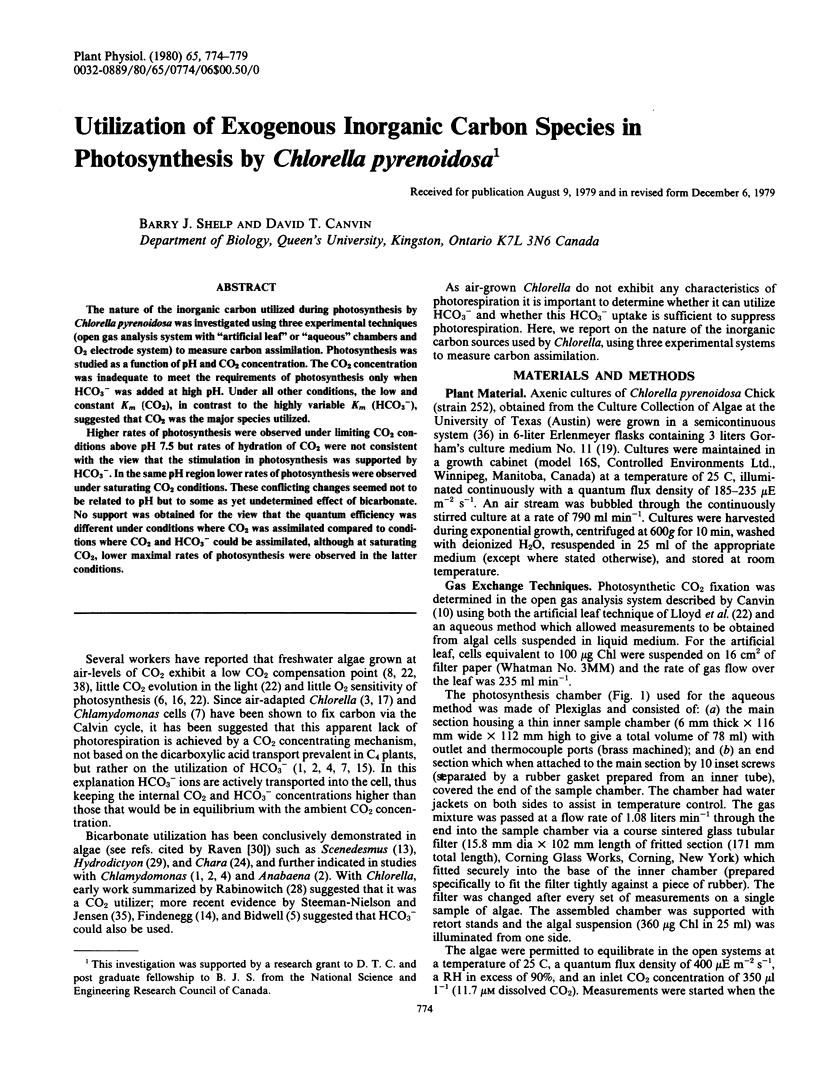
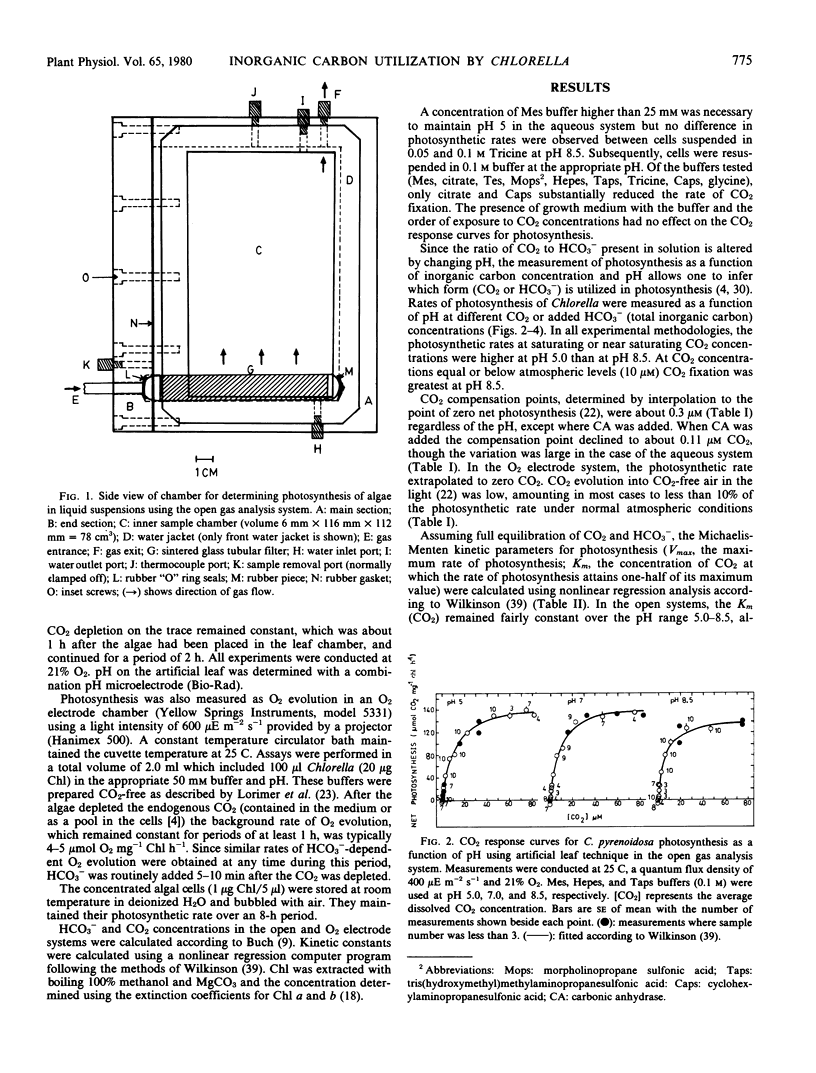
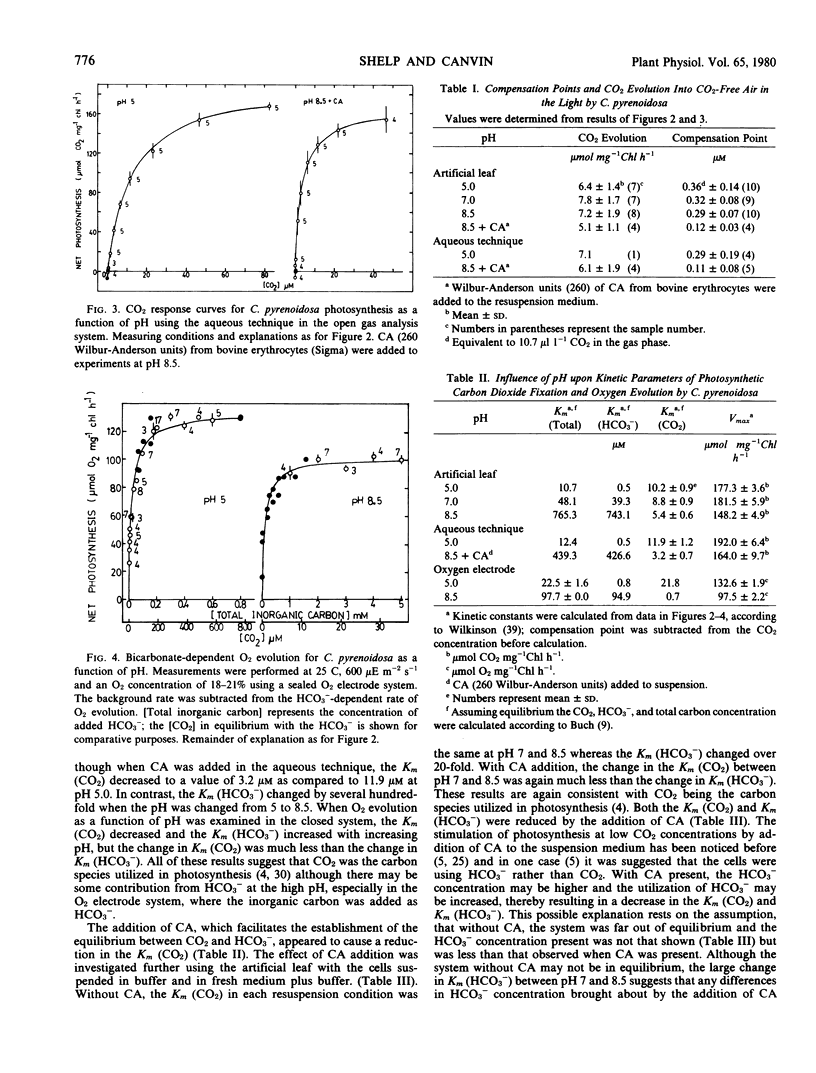
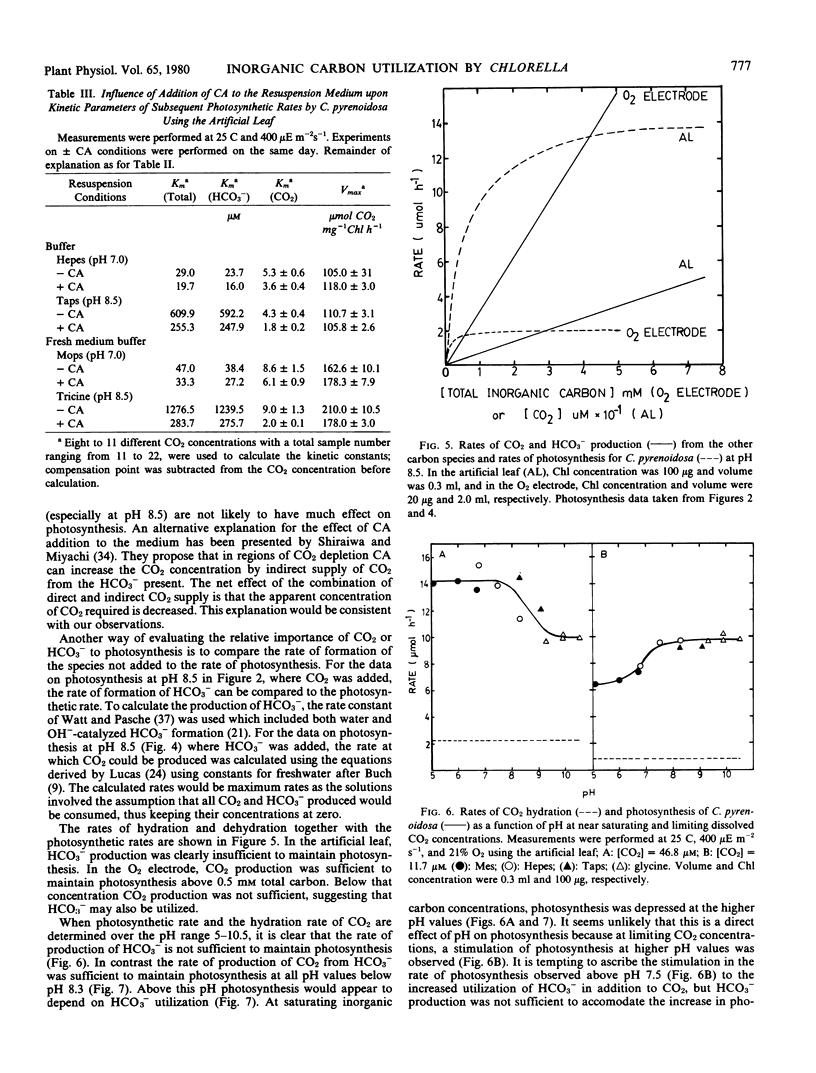

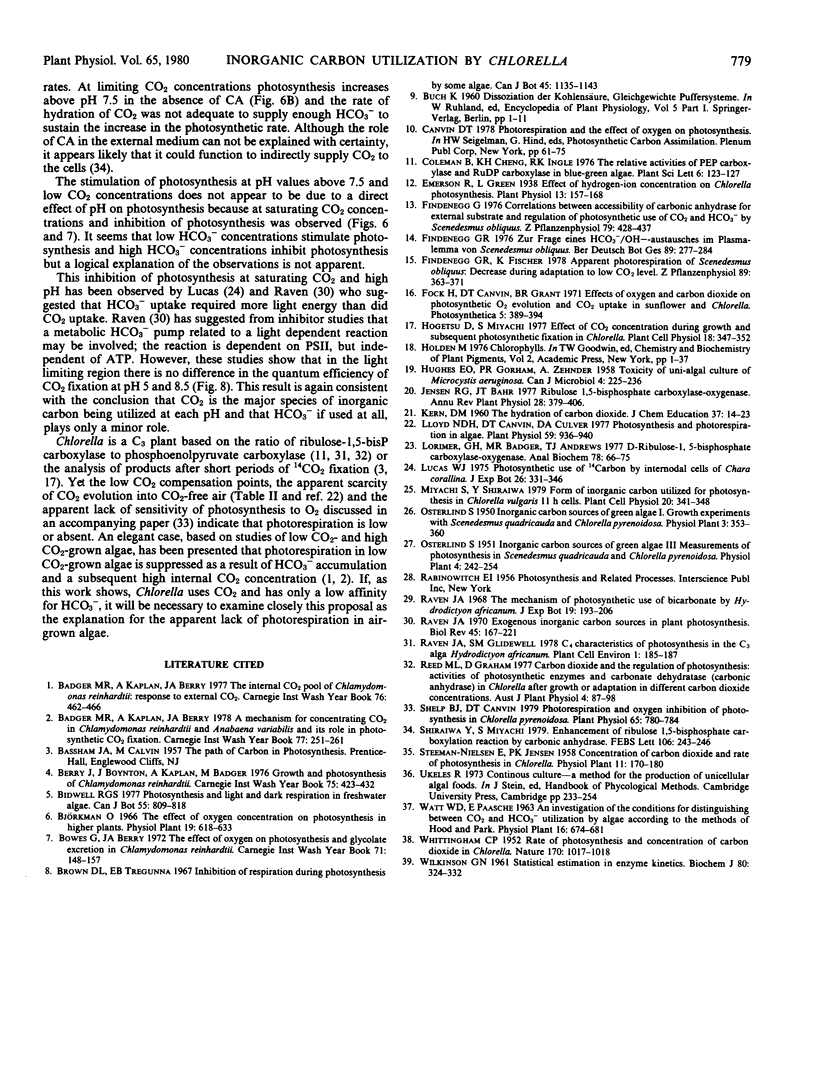
Selected References
These references are in PubMed. This may not be the complete list of references from this article.
- Emerson R., Green L. EFFECT OF HYDROGEN-ION CONCENTRATION ON CHLORELLA PHOTOSYNTHESIS. Plant Physiol. 1938 Jan;13(1):157–168. doi: 10.1104/pp.13.1.157. [DOI] [PMC free article] [PubMed] [Google Scholar]
- HUGHES E. O., GORHAM P. R., ZEHNDER A. Toxicity of a unialgal culture of Microcystis aeruginosa. Can J Microbiol. 1958 Jun;4(3):225–236. doi: 10.1139/m58-024. [DOI] [PubMed] [Google Scholar]
- Lloyd N. D., Canvin D. T., Culver D. A. Photosynthesis and photorespiration in algae. Plant Physiol. 1977 May;59(5):936–940. doi: 10.1104/pp.59.5.936. [DOI] [PMC free article] [PubMed] [Google Scholar]
- Lorimer G. H., Badger M. R., Andrews T. J. D-Ribulose-1,5-bisphosphate carboxylase-oxygenase. Improved methods for the activation and assay of catalytic activities. Anal Biochem. 1977 Mar;78(1):66–75. doi: 10.1016/0003-2697(77)90009-4. [DOI] [PubMed] [Google Scholar]
- Shelp B. J., Canvin D. T. Photorespiration and Oxygen Inhibition of Photosynthesis in Chlorella pyrenoidosa. Plant Physiol. 1980 May;65(5):780–784. doi: 10.1104/pp.65.5.780. [DOI] [PMC free article] [PubMed] [Google Scholar]
- Shiraiwa Y., Miyachi S. Enhancement of ribulose 1,5-bisphosphate carboxylation reaction by carbonic anhydrase. FEBS Lett. 1979 Oct 1;106(1):243–246. doi: 10.1016/0014-5793(79)80737-1. [DOI] [PubMed] [Google Scholar]


